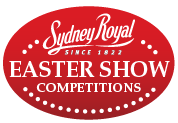Healthy Australian Horses at Sydney’s Royal Show Will Be Wrapped in Red Tape
- March 10, 2017
- ⎯ Fran Jurga
The horses are headed back to Sydney! After months of canceled events and confusing veterinary restrictions, the specter of Equine Influenza is being declared history in the state of New South Wales. Let the shows (and races and rodeos and parades and breeding) begin!

As many as 1000 horses are being schooled and groomed for their roles in shows, parades, and entertainment events at the Royal Agricultural Society of New South Wales’ Easter Show in Sydney later this month.
But can they pass the test to even get onto highways and then comply with stringent paperwork to get onto the grounds?
In the state of New South Wales, horse owners and transporters must notify the state government before moving horses; the system has taken the name THS, for Traveling Horse Statements.
From now until at least the end of June 2008, a THS must be carried on the journey when moving horses by vehicle or traveling to a horse event.
According to the state’s agriculture web site, “Horse events must be registered and the event number recorded on each THS before attending an event, so it is important for event organizers to register early.”
“The NSW Department of Primary Industries has stepped up the monitoring of events to ensure compliance with these requirements,” says a notice on the web site. “NSW Police will also continue stopping vehicles moving horses and checking for a THS. Heavy penalties apply for failure to produce a valid THS.”
According to an article in today’s Sydney Morning Herald, horse owners heading to the Royal Easter Show will need to produce a ream of documents and testing information at a special inspection site before entry to the grounds.
The horse show’s web site states that every horse coming onto Sydney Showground must either be an EI recovered horse, or an EI approved vaccinate. It is also an RAS requirement that every horse coming onto the Showground be microchipped and have that microchip recorded on the Australasian Animal Registry database.
“Each horse must be accompanied by a certificate of immunity, extensive blood-test and nasal-swab information and a travel plan specifying the exact route taken from the stables to the showground door,” writes reporter Paul Bibby. “Then there is the microchip – scanned upon arrival and checked against all documentation to prevent the entry of impostors. When each horse leaves the showground all of its bedding, food and water will be disposed of and the stables cleaned according to strict Department of Primary Industries standards.”
The public will not be allowed into the stabling area, according to Bibby.
The Royal Easter Show has been the culmination of the show season since 1822 and includes, in addition to the championship horse show, shows for all types of livestock and a wonderful heavy horse show. Most shows were canceled this year because of the disease outbreak.





